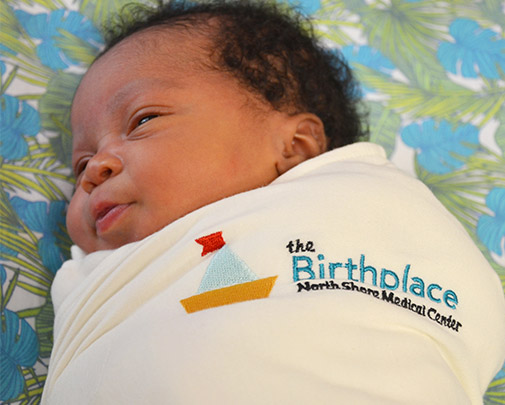When You Go Home

Bringing your new baby home is an exciting time. As you’re learning about your new baby and his or her needs, you may find yourself confused or uncertain about what to do. It’s a good idea to communicate with your obstetrical care provider and your baby’s doctor if you have any questions or concerns, as they are excellent sources of information and can provide you with helpful hints and support after your delivery. Below are general health care guidelines you should follow.
Find a pediatrician
Safe sleep at home
When in our care, our staff ensure that your baby sleeps safely and comfortably. We also want to help ensure your baby continues to have a blissful rest at home. That's why we gift each of our moms with a brand new Sleepsack. New parents are confident about best safe sleep practices after learning from our team in the Birthplace.

Instructions for mother after going home
- Continue to take your vitamins.
- Start your post-partum exercises as instructed.
- If breastfeeding, stimulate your breasts every two to three hours to encourage your milk to let down.
- If bottle feeding, wear a tight fitting bra for seven to 10 days. Remove only to shower.
- Soak your episiotomy three to four times a day in a warm water bath or sitz bath.
- Do not put anything in your vagina until after your follow-up visit with your doctor.
Call your doctor if you have the following symptoms:
- Temperature of 101 degrees Fahrenheit or higher.
- Excessive vaginal bleeding (saturating a pad an hour).
- Large clots (size of a golf ball) or numerous small clots.
- Breast pain with redness, flu-like symptoms, or fever and chills.
- Continued sore nipples, cracking, and/or bleeding, unrelieved breast engorgement.
- Burning or urgency with urination.
- Sharp abdominal pain or shortness of breath.
- Pain in your legs or warm, red or tender area in leg, especially in the calf.
- Your incision has red streaks, is hot to the touch, has a bad odor to drainage, or opens.
- Foul odor to your vaginal discharge or increased pain in vaginal area.
- Depression or a feeling that you may harm yourself or your baby.
Caring for baby after you go home

- Feed every two to four hours.
- Keep the umbilical cord stump clean and dry until the stump falls off.
- Continue using petroleum jelly on the circumcision for four to seven days.
- Allow baby frequent short-term exposure to sunlight.
- Your baby should have five to six wet diapers each day and at least one stool.
Call your baby’s doctor if your baby has the following symptoms:
- Large amounts of vomiting or forceful vomiting.
- Temperature of 100.5 degrees Fahrenheit or higher.
- Difficulty breathing or increased effort to breathe.
- Refusal of two feedings in a row or poor appetite.
- Dramatic changes in skin color: very yellow, blue, or pale.
- Less than six to eight wet diapers in 24 hours, after three days of age.
- Bowel movements that are very watery, unusually bad smelling or contain blood.
- Redness, bad odor, or discharge around the belly button or circumcision.
- Drastic behavior changes such as increased irritability, excessive crying without cause, extreme sleepiness, floppy arms and legs.

